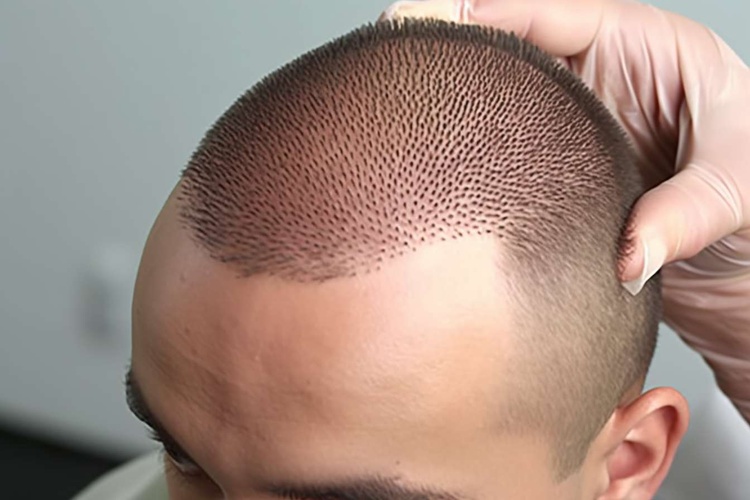Managing Scalp Psoriasis: Treatments, Care, and Costs
Scalp psoriasis can lead to persistent itching, red scaly patches, and social discomfort. This comprehensive guide explains how clinicians diagnose the condition, reviews topical, systemic, and phototherapy options, and shares practical scalp-care tips. Learn expected costs, insurance considerations, and how to work with your dermatologist to control symptoms and improve daily life with evidence-based strategies.

How clinicians diagnose and assess scalp psoriasis
Diagnosis typically begins with a visual exam of the scalp and a thorough medical history. Dermatologists look for characteristic signs such as sharply outlined red plaques, thickened skin, and silvery scaling. Because conditions like seborrheic dermatitis, atopic eczema, and fungal infections can appear similar, clinicians evaluate the pattern of lesions, symptom history, and any family history of psoriasis or autoimmune disease. When uncertainty remains, a skin biopsy may be performed to confirm the diagnosis.
Assessing severity is a key step in choosing treatment. Physicians will consider how much of the scalp is involved, the thickness and inflammation of lesions, and the degree of itching, pain, or bleeding. These factors help determine whether topical approaches are sufficient or whether phototherapy or systemic medications are warranted.
Medical treatments and what to expect
Treatment options range from home-use medicated cleansers to prescription systemic agents. The choice depends on disease severity, prior responses to therapy, comorbid medical conditions, and patient preference.
-
Medicated shampoos: Over-the-counter and prescription shampoos with salicylic acid or coal tar are used to soften and lift scale, improving the effectiveness of subsequent topical treatments. These products reduce crusting and may improve scalp comfort when used as directed.
-
Topical corticosteroids: Steroid-based lotions, foams, gels, or solutions designed for the scalp are commonly prescribed to decrease inflammation and itching. They are formulated to adhere to scalp skin despite hair and are often used for limited courses or intermittently to reduce the risk of side effects such as skin thinning.
-
Vitamin D analogs: Agents like calcipotriol (calcipotriene) slow abnormal skin cell proliferation and are frequently combined with topical steroids to enhance plaque control and maintain results over time.
-
Systemic medications: For extensive, treatment-resistant, or highly symptomatic scalp psoriasis, oral or injectable systemic therapies may be necessary. These include traditional immunosuppressants as well as modern biologic drugs that target specific immune pathways. Systemic therapy requires close monitoring by a healthcare provider and often prior authorization from insurers.
-
Phototherapy: Targeted light treatments can be effective when the scalp is accessible for exposure. Phototherapy may be less practical for areas with dense hair but can be useful in selected cases using specialized devices or clinic-administered treatments.
Often, a combination strategy is most effective. For example, removing scale with a medicated shampoo, applying a topical steroid to inflamed areas, and using a vitamin D analog for maintenance can produce better outcomes than any single approach alone.
Practical scalp care and at-home management
Daily care routines can substantially influence symptoms and flare frequency. Gentle, consistent habits are recommended:
- Wash gently and regularly: Use lukewarm water and a mild, soothing or medicated shampoo to remove scale while preserving skin oils.
- Avoid hot water and aggressive scrubbing, which can worsen inflammation and itching.
- Use a wide-tooth comb or soft brush to loosen scales after applying an emollient or treatment, rather than picking at plaques, which risks bleeding or infection.
- Limit harsh styling products, frequent chemical treatments, and excessive heat styling, all of which may provoke flare-ups.
Some people find relief from natural emollients such as coconut oil, sunflower oil, or aloe vera to help soften scales and hydrate the scalp. While these measures can soothe symptoms, they are not substitutes for medically indicated therapy. Always discuss complementary approaches with your dermatologist to avoid irritation or interactions with prescription treatments.
Costs and insurance considerations
| Treatment Type | Average Cost Range | Coverage/Insurance |
|---|---|---|
| Medicated Shampoos | $10-30 per bottle | Usually OTC, not covered |
| Topical Prescriptions | $30-200 per month | Often partially covered |
| Systemic Medications | $500-3000 per month | Usually requires prior authorization |
| Light Therapy | $50-300 per session | May be partially covered |
Prices, rates, or cost estimates mentioned in this table are based on available information and may change over time. Independent research is advised before making financial decisions.
Choosing the right plan and follow-up
There is no one-size-fits-all cure for scalp psoriasis. Successful management typically involves a tailored plan that balances effectiveness with safety and patient preferences. Dermatologists often begin with the least invasive effective therapy and escalate treatment for insufficient response. Common strategies include rotating topical agents, using combination regimens, and scheduling intermittent maintenance to reduce side effects.
Regular follow-up is important so clinicians can monitor progress, adjust doses, and manage adverse effects. Patients who continue to experience severe itching, bleeding, widespread scalp involvement, or significant emotional distress should re-evaluate treatment options with their clinician, as systemic therapies or alternate approaches may be appropriate.
Final thoughts
With appropriate diagnosis, a thoughtful combination of therapies, and consistent scalp care, many people achieve meaningful symptom control. Open communication with a dermatologist about goals, concerns, and treatment costs will help create a plan that fits your condition and lifestyle.
This article is for informational purposes only and should not be considered medical advice. Please consult a qualified healthcare professional for personalized guidance and treatment.






